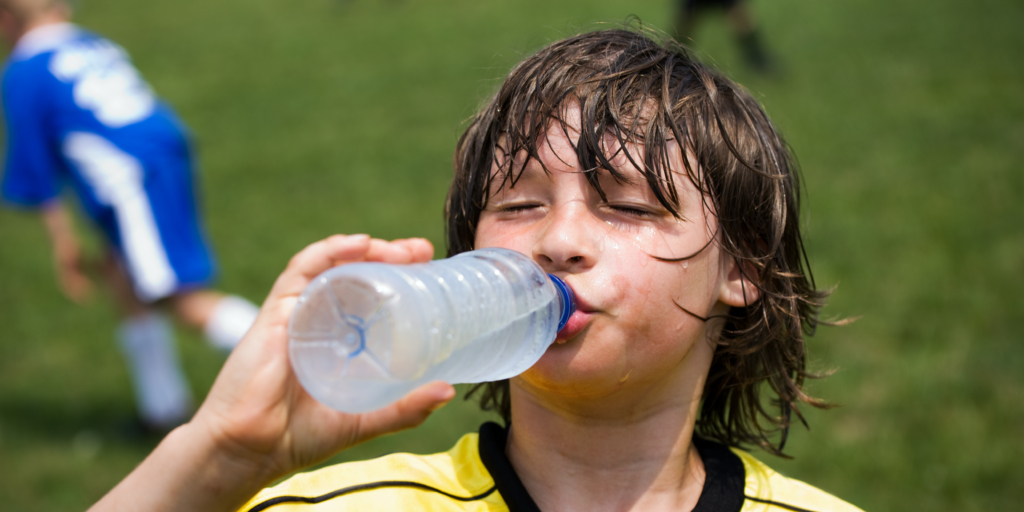What’s the Difference Between Heat Exhaustion and Heat Stroke?

As we wrap up the hottest summer in recorded history, there’s never been a more important time to understand the difference between heat exhaustion and heat stroke. Heat-related illness is especially common in Mississippi and other Southern states.
Once you know the difference between heat exhaustion and heat stroke, you also need to know when overheating is an emergency and where to turn for help. So, pour an ice-cold drink, crank up the air conditioning, and keep reading to learn more about this “hot” topic – it could save your life.
Heat Exhaustion vs. Heat Stroke
Both heat exhaustion and heat stroke are caused by your body’s inability to cool itself. Heat exhaustion is when your body loses excess amounts of water and salt, typically from sweating too much.
If you experience heat exhaustion for an extended period of time, it can lead to heat stroke. Heat stroke is when your body is no longer able to control its internal temperature – a serious condition that requires immediate medical attention.
Heat exhaustion or heat stroke can come on quickly when you overexert yourself, especially in hot weather. Protect yourself and your loved ones by knowing the symptoms of both conditions, and when you need to seek emergency treatment.
Symptoms of Heat Exhaustion
Muscle cramping is usually the first sign of a heat-related illness. Other symptoms of heat exhaustion include:
- Increased heavy sweating
- Feeling lightheaded or dizzy
- Fainting
- Nausea or vomiting
- Pale, cold, or clammy skin
What You Should Do
Move to a shaded or cool area if you can and lie down. Remove any extra layers or unnecessary clothing, such as shoes or socks, and drink extra water. If you are able, take a cool shower or use a cold compress to decrease your body temperature.
When It’s an Emergency
If you’re able to cool down within 30 minutes, heat exhaustion is usually not an emergency. However, if you still feel unwell, are unable to lower your body temperature, or begin experiencing symptoms of heat stroke, seek medical treatment right away.
Symptoms of Heat Stroke
The symptoms of heat stroke include:
- Body temperature above 104° F
- Racing heart rate
- Rapid, shallow breathing
- Hot, dry, or red skin
- Loss of consciousness
Confusion, irritability, slurred speech, delirium, and seizures can also result from heat stroke.
What You Should Do
Follow the same steps as heat exhaustion (move to a shaded or cool area, lie down, and remove unnecessary clothing), then call 911 or head to your nearest urgent care clinic or emergency room immediately. Try to cool yourself with any means available (cold compress, wet towel, sponge with cool water, misting fan, etc.). Focus on your armpits, groin, neck, and back – these areas all have blood vessels close to the skin, which can help lower your body temperature faster.
When It’s an Emergency
Heat stroke symptoms should ALWAYS be considered an emergency. Any delay in seeking medical help for heat stroke can be fatal.
Treating Heat-Related Illness
To treat exhaustion or heat stroke, you may be advised to take a bath of cold ice water, pack yourself in ice packs, or wrap yourself in a special cooling blanket to safely lower your body temperature. Your local TrustCare urgent care clinic can also evaluate you, do an EKG to check your heart rate, and make any necessary referrals.
After recovering, you’ll probably be more sensitive to high temperatures for at least a week. Avoid hot weather or heavy exercise until your doctor tells you it’s safe to resume normal activities.
Too Hot to Handle: Are You at Risk?
Anyone can develop heat exhaustion or heat stroke. But there are certain factors that increase your risk, including:
- Age – Young children (birth to age 4) and older adults (age 65 and older) have a more difficult time regulating their body temperature.
- Obesity – When you weigh more, your body retains more heat and is harder to cool down.
- Medications – Some medications used to treat high blood pressure and other conditions can reduce your ability to stay hydrated.
- Sudden temperature changes – When you step outside from air conditioning into hot, humid weather, your body can struggle to adjust.
If You Have Multiple Sclerosis (MS)
Many people with MS experience a temporary worsening of their symptoms in hot weather, even when they aren’t exerting themselves. Some MS patients also have blurred vision when they get overheated – a phenomenon known as Uhthoff’s sign.
How to Prevent Overheating
You can’t control the temperatures outside, but you can help prevent heat exhaustion and heat stroke by:
- Staying hydrated – Drinking plenty of fluids helps your body sweat and maintain a normal temperature.
- Wearing lightweight clothing – Heavy and tight clothing don’t allow your body to cool properly.
- Avoiding the hottest times of the day – Try to exercise or work outside in the early morning or evening when it’s cooler.
- Pacing yourself – People who aren’t used to hot weather are especially susceptible to heat-related illness. It can take several weeks for your body to adjust.
- Knowing the signs – Reading this article is a great start!
Visit TrustCare Today for All Your Urgent Care Needs
At TrustCare, we make it as quick and easy as possible to get medical care whenever you need it. All TrustCare urgent care locations are open seven days a week – so save yourself a trip to the ER, and visit a TrustCare urgent care clinic whenever you want to Feel Better Faster®.
